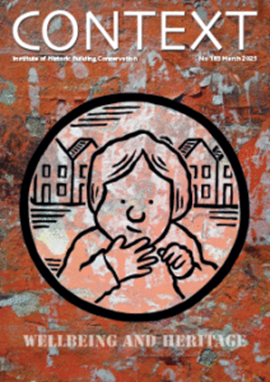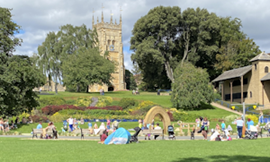What are the challenges during Scan to BIM for Surveyors and Laser Scanning Companies?
Scan to BIM Modeling is a method that uses laser scanning to capture detailed measurements of buildings. It then creates accurate 3D models of the structure. These models help architects, engineers, and builders understand a building’s exact condition. This allows them to plan and make decisions more effectively. Scan to BIM can reduce mistakes and save time during construction. Surveyors and laser scanning companies are key to the Scan to BIM process. They use special tools to gather data from a building. This data is then turned into a 3D model with BIM software. The model provides a clear and accurate picture of the building. It helps all project teams work together and make informed choices.
Though Scan to BIM is helpful, it comes with challenges. Surveyors and laser scanning companies face problems with collecting data, processing it, and making sure the models are accurate. These challenges can affect the success of the project. In this blog, we will look at the common challenges faced by professionals during the Scan to BIM process.
Contents |
[edit] Data Accuracy and Conversion
One major challenge in Scan to BIM is guaranteeing the data is accurate. Laser scanners, especially those used in LiDAR Scan to BIM Services, are highly precise, but surfaces like glass or water can cause errors in the scans. Hard-to-reach areas may also result in missing data, which can affect the quality of the final model. Handling large amounts of data is another challenge. Laser scanners create huge point cloud files that can be hard to store and process. The larger the scan, the more storage space and time are needed. Converting point cloud data into a BIM model is also difficult. Point clouds are made of millions of data points that must be turned into a 3D model. The software used for this may not always work perfectly, requiring extra time and adjustments.
[edit] Integration with Existing Systems
Integrating different software systems is a challenge in Scan to BIM. Surveyors and laser scanning companies often use tools that do not work well together. Laser scan files may not fit easily into BIM software, leading to delays and extra work. Another issue is the lack of standard workflows. Different teams may use different methods for handling Scan to BIM data. This makes it harder to share and update models smoothly. A consistent workflow is needed for better teamwork. Real-time collaboration is also a problem. Scan to BIM models can be very large. Sharing them in real-time can be slow, causing delays and miscommunication.
[edit] Resource and Time Constraints
Surveyors and laser scanning companies often face time and budget limits. Collecting data can take a lot of time, especially in hard-to-reach areas. Bad weather or limited access to the site can delay the scanning process and add extra costs. Processing the data also takes time. Laser scans create large files that need to be cleaned and turned into usable models. This can take longer than planned, causing delays. The cost of scanning equipment and software is another issue. Not all companies can afford the latest technology. This can limit the size and complexity of the projects they can handle.
[edit] Skill and Expertise Requirements
Scan to BIM requires specific skills. Surveyors need to know how to operate laser scanning equipment. They also need to understand Autodesk BIM software like Revit or AutoCAD to process scan data. Knowledge of point cloud processing is important for cleaning and organizing data. The technology is always changing, and surveyors must keep up with new tools and updates. This means they need ongoing training. Another issue is the lack of standardized training—different companies may use different methods. This can lead to inconsistent results and affect quality.
[edit] Legal and Compliance Issues
Legal and compliance issues often arise in Scan to BIM projects. Data ownership is a common concern. Surveyors and laser scanning companies need clear agreements on who owns the scan data. Without this, disputes can happen between clients and service providers. Privacy is another issue. Scan data can capture private or sensitive information. Surveyors must protect this data to avoid legal problems. They need to follow laws on data security and privacy. Scan to BIM must also meet local building codes and BIM standards. Each region may have specific rules on how BIM models should be structured. Surveyors must make sure models follow these rules to avoid legal risks and get project approval.
[edit] Equipment and Technological Constraints
Laser scanning equipment like Leica RTC360, FARO Focus, Riegl VZ-4000, and Trimble X7 can be expensive. Many surveyors do not have access to the latest technology. This can affect the quality of scans and limit the types of projects they can work on. Weather and lighting can impact scanner performance. Bad conditions can lead to less accurate scans and longer scan times. The software needed to process point clouds, like Autodesk ReCap and CloudCompare, requires powerful computers. Not every company can afford high-performance systems. This can slow down the data processing and make handling large projects more difficult.
[edit] Coordination and Communication Issues
What factors influence the cost of Scanning for BIM services? Coordination and communication are key challenges in Scan to BIM projects. Teams like surveyors, architects, and contractors often use different tools and workflows. This can lead to misunderstandings and delays. If there isn’t clear communication, teams may not be aligned on project goals or data needs. The data in Scan to BIM projects must be updated regularly. If it’s not shared quickly, teams may work with outdated information. This can cause mistakes and extra work. Coordinating between multiple teams can be tough, especially when they work in different locations. Sharing large files like point clouds and 3D models can slow down communication. Keeping all teams aligned and using the most recent data is a major challenge.
[edit] Conclusion
Scan to BIM is a powerful tool that improves project accuracy and efficiency. However, it comes with challenges that need careful attention. Technical issues, data management, and communication gaps can impact the success of a project. To tackle these challenges, surveyors and laser scanning companies must focus on skill development and invest in advanced equipment. They also need to improve collaboration and workflow integration. Staying updated with software tools like Autodesk ReCap will help simplify the process. By addressing these challenges, professionals can maximize the benefits of Scan to BIM and ensure better project outcomes in the construction industry.
IHBC NewsBlog
UK Antarctic Heritage Trust launches ‘Virtual Visit’ website area
The Trust calls on people to 'Immerse yourself in our heritage – Making Antarctica Accessible'
Southend Council pledge to force Kursaal owners to maintain building
The Council has pledged to use ‘every tool in the toolbox’ if urgent repairs are not carried out.
HE’s Research Magazine publishes a major study of the heritage of England’s suburbs
The article traces the long evolution of an internal programme to research 200 years of suburban growth
IHBC Context 183 Wellbeing and Heritage published
The issue explores issues at the intersection of heritage and wellbeing.
SAVE celebrates 50 years of campaigning 1975-2025
SAVE Britain’s Heritage has announced events across the country to celebrate bringing new life to remarkable buildings.
IHBC Annual School 2025 - Shrewsbury 12-14 June
Themed Heritage in Context – Value: Plan: Change, join in-person or online.
200th Anniversary Celebration of the Modern Railway Planned
The Stockton & Darlington Railway opened on September 27, 1825.
Competence Framework Launched for Sustainability in the Built Environment
The Construction Industry Council (CIC) and the Edge have jointly published the framework.
Historic England Launches Wellbeing Strategy for Heritage
Whether through visiting, volunteering, learning or creative practice, engaging with heritage can strengthen confidence, resilience, hope and social connections.
National Trust for Canada’s Review of 2024
Great Saves & Worst Losses Highlighted.















